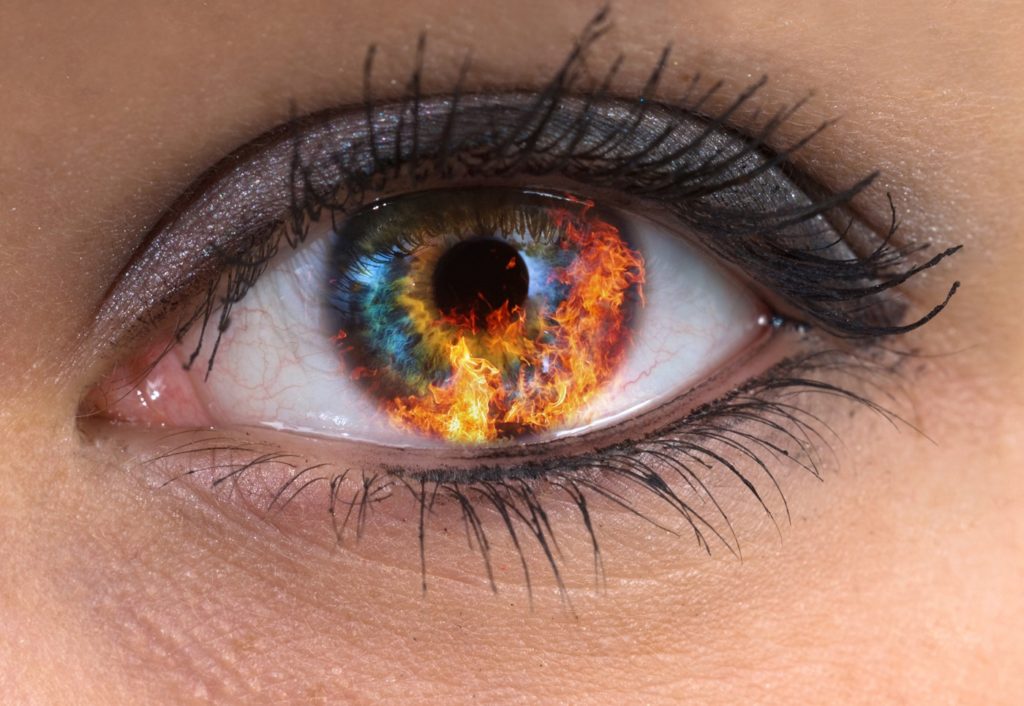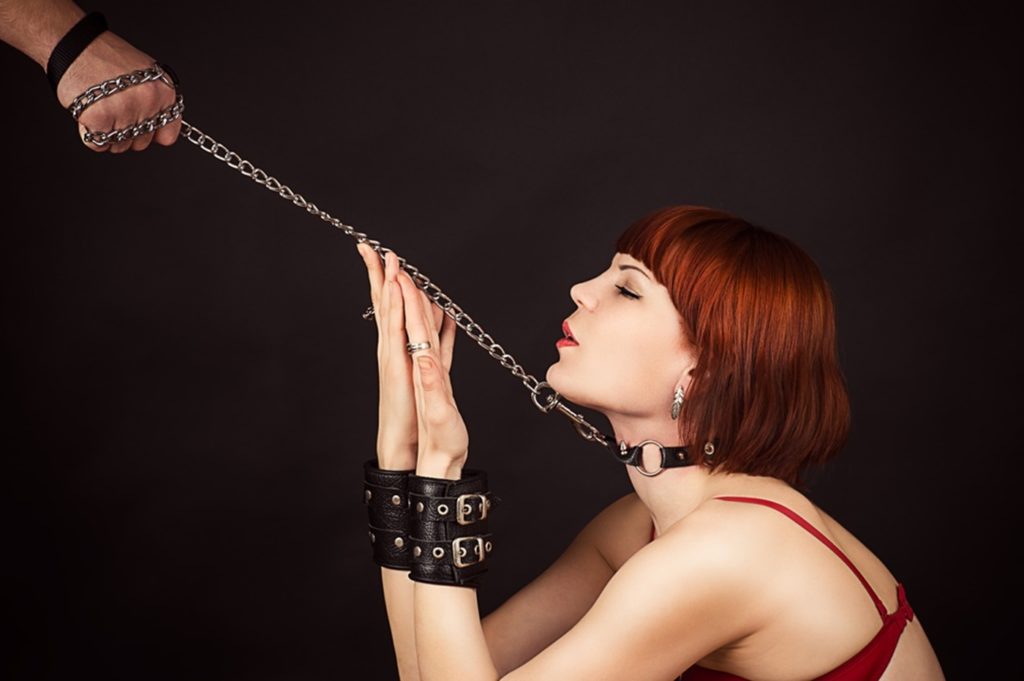Like anyone else, BDSM and kink lovers enjoy adornment that reflects their interests and aesthetics.
Jewelry, tattoos, and body modification from any culture or subculture are used as a form of expression. Jewelry or body modification such as branding can reflect marriage or commitment, religious or ceremonial affiliation, a ritual for a cultural holiday, or initiation rite.
Wedding rings are very common, for example, across many cultures. Collaring is a popular commitment ritual in BDSM relationships.
Read: What is a BDSM Collaring Ceremony?
Many people have tattoos featuring their children’s names or birth dates. There are many other ways to express a relationship or important ritual through jewelry or marking.
In BDSM, body modification and body branding are practices of dominance and submission, sadism and masochism, and expressions of power exchange relationships as well.
What Is Body Branding?
Body branding is an ancient art that can include burning, scarification, cutting, tattooing, piercing and more. Ritual passages and initiation ceremonies in many tribal cultures historically involve body branding or related body modifications.
Body branding specifically is a kind of mark made on the body with hot metal. The burn or blister is a pattern, word, symbol, or motif that is meaningful to the person being branded and/or to the person doing the branding.

Branding can be a form of marking ownership, or a form of punishment, or both. It can be an expression of submission or a mark of a rite of passage. It can be a simple fashion statement as any kind of body mark or jewelry as well, but more often has a deeper significance to the wearer.
Historically, slaves were branded to mark them as property of a slaver. Animals are branded, from swans to cows, to mark who owns them. Sometimes criminals were branded in remembrance of the crimes they committed. Human trafficking victims are often branded with a motif that signifies their ownership by a particular slaver as well, marking them as property.
Branding in BDSM
BDSM branding has a dual context in its practice. It is physically and psychologically pleasurable in the context of sadomasochism- for the brander or brand owner, and for the submissive or slave.
Branding also marks the sub as the property of the master or dominant. BDSM branding is a mark of ownership in a power exchange relationship.
Common symbols or brands in BDSM branding include private signs understood between Dom and sub, hearts, x’s, initials, numerals, and various emojis or BDSM symbols for littles, owners, polyamory, and so on.
BDSM branding and all other kinds of brands should only be given and received with full consent of the one being branded.
Read: How to Find a BDSM Slave or Master

Types of Modern Branding
Body branding creates permanent marks on the skin. This can be done using a variety of methods.
BDSM branding and aesthetic branding cause burn wounds and caution is advised! They should be undertaken only with a professional or experienced person knowledgeable of branding care and healing.
Whether for BDSM branding, other ritual brands, or aesthetics alone, these are some branding methods used today.
1. Branding Iron
The classic idea of the “branding iron” as used to mark cattle is like a “hot stamp.” A piece of iron or stainless steel in a particular design or motif is heated and then pressed to sear the skin, resulting in a burn in the desired pattern.
2. Striking
More commonly in modern branding is a technique called striking. Small pieces of hot stainless steel are applied to the skin in the desired pattern to make a design.
3. Electrocautery
In electrocautery, hot surgical-grade cauterizing equipment is applied to give third-degree burns to the surface of skin in the desired design.
4. Electrosurgery
This technique is similar, but uses electricity to create the desired symbols on the skin’s surface.
Read: Incorporating Electricity into Advanced Kink Play
5. Moxibustion
Moxibustion is an ancient technique that is popular again. It uses burning plants and incense to create heat on the body. It is a healing module, like acupuncture, but with fire, but can be used to brand the skin.
More Body Modification Kinks
BDSM branding is a body modification kink but there are many other kinds of body mod kinks.
Piercing Play
Elaborate patterns can be pierced for masochistic pleasure. Piercing play can be a form of torture and punishment. Piercing can be very intense and ritualistic in a BDSM context.
Read: BDSM Needle Play and Play Piercing

Tattoo Fetish
While tattooing is very widespread and popular today, for many people, it is still an act of rebellion, independence, tribal or ritual marking, or a sexual pleasure.
Folks with a tattoo fetish may experience sexual excitement at getting tattoos themselves, or at looking at other people with tattoos. There are also BDSM tattoos that communicate particular kinks to others, or that mark ownership.
Read: Tattoo and Piercing Fetish
Scarification
Scarification is a body modification technique that permanently marks the skin, like BDSM branding and like tattooing. However, in scarification, the aesthetic goal is a pattern of scars, with skin raised.
Scarification is also an ancient tribal technique in many cultures. In ancient African cultures as well as indigenous cultures in the Americas and beyond, incisions are made in the skin with stones, knives, cut glass, or sharp branches, to create meaningful images or patterns.
Read: Knife Play Basics for BDSM Lovers
In modern scarification, similar techniques to BDSM branding may be used, such as striking, violet wands or electrosurgery, cold branding, cutting with sanitized tools, abrasions, and more.

Legal Precautions for BDSM Branding and Body Modifications
Body modification such as BDSM branding should always take place with an experienced practitioner educated in safety and healing, just as we use experienced tattoo artists. BDSM branding and scarification practices cause wounds that need to safely heal.
BDSM branding can be an extremely bonding and intimate practice with profound physical and psychological pleasure, but it is still risky and should be undertaken with care.
Read: BDSM Education: How to Learn BDSM Online
Some states and some countries have consent laws, age requirements, and different regulations, and some outlaw the practice entirely due to its historic misuse in slavery or its perception of harm. Be aware of the specific regulations and guidelines of your area.
Do you engage in BDSM branding or body modification?


Tell us what you think